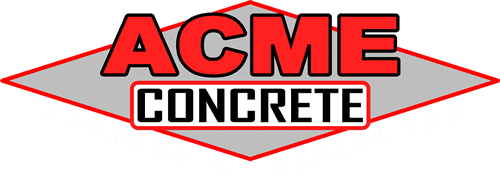When it comes to raising and leveling concrete, polyurethane injection has become the go-to solution. It’s far superior to old mudjacking techniques, offering a cleaner, more precise, and longer-lasting result. However, simply using polyurethane doesn’t guarantee success. Many factors determine whether a project is truly a high-value, long-term solution. As demonstrated in our latest video, poor “polylift” installation methods can lead to failure—even when using polyurethane.
The Right Polyurethane for the Application
Not all polyurethane materials are created equal. Different formulations vary in rates of expansion, density, and how they interact with moisture (hydrophilic vs. hydrophobic properties). The right polyurethane must be chosen based on the specific application. Some contractors prioritize yield (how much the material expands) over durability, using lower-density foams that compress over time. This approach may cut costs, but it results in weak, unstable repairs that won’t last. The best polyurethane for lifting concrete must be strong enough to support the slab long-term without excessive expansion that creates unnecessary voids or instability.
The Cheapest Bid Can Be a Sign of Trouble
This project is a perfect example of what happens when the lowest bid is chosen. The previous contractor used a Polylifting approach with just one injection point per section, failing to properly fill voids beneath the slabs. This left the raised concrete unsupported, putting excessive stress on the foam and leading to premature settling.
This is how “cheap” bids are made:
Using higher yield material to cut costs
Reducing labor through fewer injection points
Ignoring long-term durability in favor of quick fixes
A cheaper bid might seem appealing, but poor installation means paying for the job twice.
Think You're Getting a Great Warranty? Read the Fine Print!
Some companies boast impressive warranties, but if you read the fine print, you might find they don’t actually offer much protection. Many warranties are written in a way that benefits the contractor more than the customer. For example, a six-year warranty might seem reassuring, but exclusions and loopholes could mean little to no real coverage. If a company cuts corners on materials and installation, their warranty likely has built-in ways to avoid liability. Before trusting a warranty, always read the terms carefully and ask questions to ensure you’re truly covered.
Choose a True Specialist
Not all concrete raising companies are created equal. Many contractors offer polyurethane lifting as just one of many services—alongside power washing, epoxy coatings, waterproofing, and more. These multi-service companies don’t have to be the best at concrete raising because they have other revenue streams to rely on. In contrast, true specialists like Acme Concrete Raising & Repair have to be the best because it’s all we do. Every project we complete must meet the highest standards because our reputation and success depend entirely on our expertise in concrete raising.
Unlike multi-service companies that divide their focus across different trades, we invest all our time, training, and resources into perfecting our Smart Lift System. Our certified technicians follow strict installation procedures to ensure every slab is raised correctly and fully supported. That’s why our repairs last, and why HOAs, property managers, and homeowners trust us for long-term concrete solutions.
The Bottom Line
A polyurethane lifting project is only as good as the materials and installation behind it. Choosing the cheapest bid or a contractor with a flashy warranty won’t guarantee success. Instead, work with a true specialist who understands the science behind polyurethane lifting and follows best practices to ensure your concrete stays stable and level for years to come.
Watch our latest video to see how we corrected a failed polylifting job and why expertise makes all the difference!

